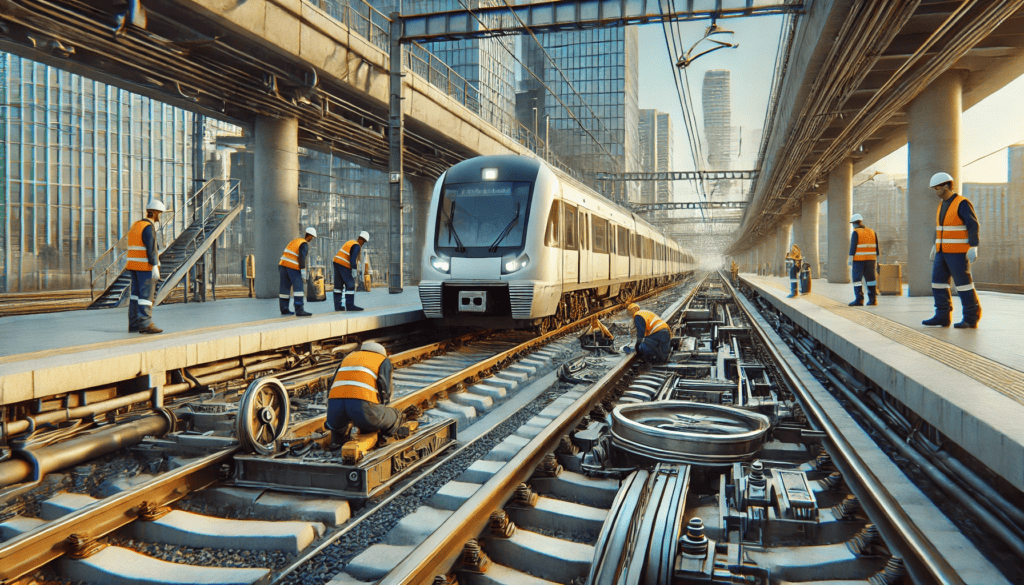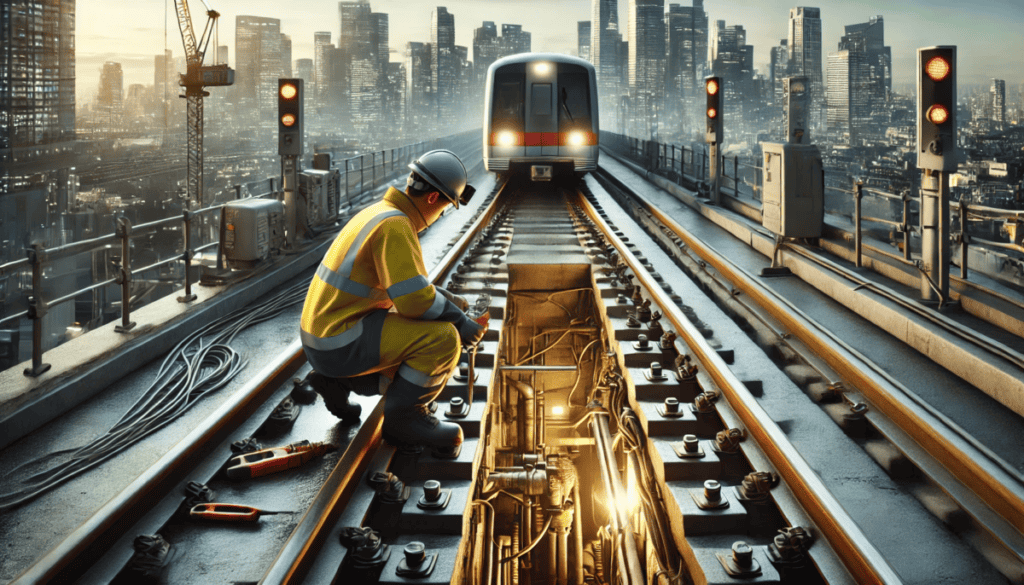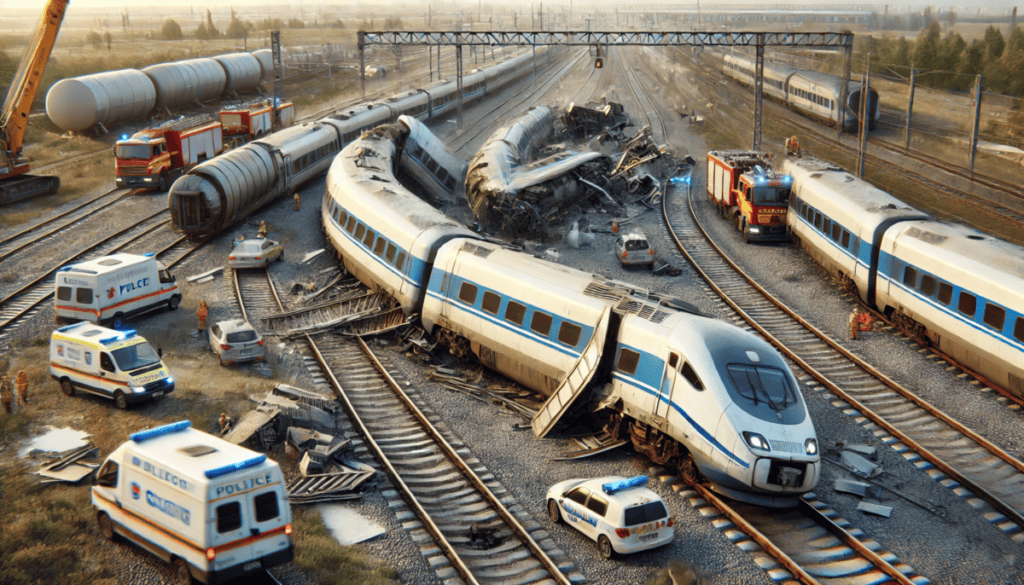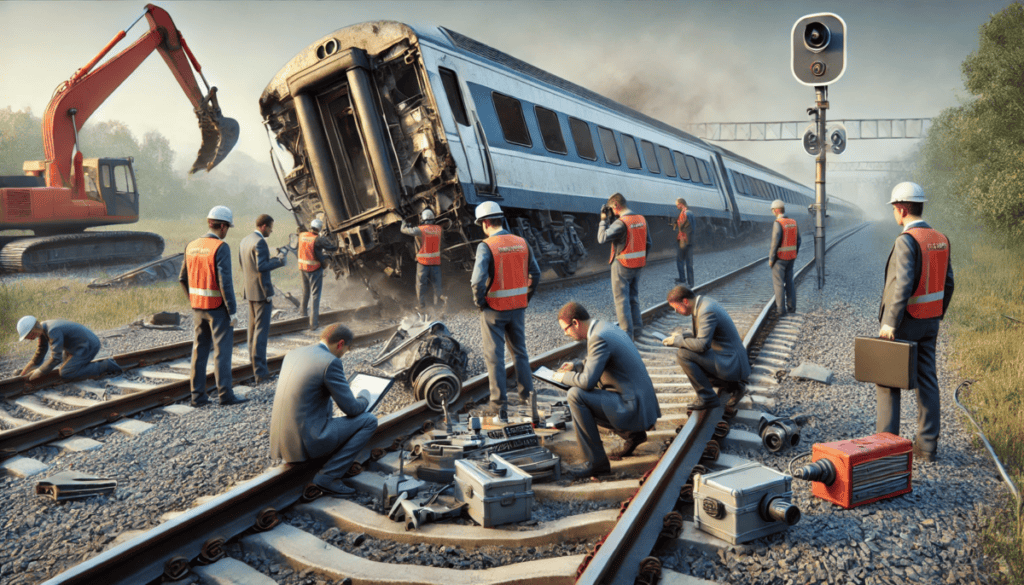Rail System Failure Analysis: Expert Insights

Understanding and analyzing rail system failures
Understanding and analyzing rail system failures is critical for ensuring public transit systems’ safety, efficiency, and reliability.
Rail systems, including light rail networks, play a vital role in urban transportation, and any failures can lead to significant disruptions, accidents, and even fatalities.
This article explores the common causes of rail system failures, methods for analysis and prevention, the role of expert witnesses in failure analysis, and the importance of design consultancy in maintaining robust rail infrastructure.

Common Causes of Rail System Failures
Rail system failures can result from various factors, including mechanical issues, human error, environmental conditions, design flaws, and maintenance lapses. Understanding these causes is essential for developing effective strategies to prevent failures and ensure the safe operation of rail systems.
Mechanical Failures
Mechanical failures are among the most common causes of rail system disruptions. These can include issues with the tracks, wheels, braking systems, and propulsion mechanisms. For instance, wheel failures due to wear and tear or improper maintenance can lead to derailments. Similarly, failures in the braking system can prevent trains from stopping in time, causing collisions.
Case Studies
These case studies draw on elements seen in real cases, but they have been merged and edited for educational and illustrative purposes.
Case Study: The Washington Metro Derailment
In January 2015, a Washington Metro train derailed due to mechanical issues with the track. The derailment occurred because of a misalignment in the track caused by a defective rail fastener. This incident highlighted the importance of regular inspections and maintenance to identify and rectify mechanical issues before they lead to accidents.
Human Error
Human error is another significant factor contributing to rail system failures. Mistakes by operators, signalmen, or maintenance workers can result in catastrophic incidents. For example, operator fatigue or miscommunication between train control centers and drivers can lead to signal violations and collisions.
Case Study: The Chatsworth Train Collision
In September 2008, a Metrolink train collided head-on with a freight train in Chatsworth, California, resulting in 25 fatalities and over 100 injuries. The investigation revealed that the Metrolink train operator had missed a red signal while texting. This tragedy underscored the need for strict adherence to safety protocols and implementing automated systems to reduce human error.

Environmental Factors
Environmental factors like extreme weather conditions, natural disasters, and wildlife interference can also cause rail system failures. Floods, landslides, and severe storms can damage tracks and infrastructure, leading to service disruptions and accidents.
Case Study: The Quebec Rail Disaster
In July 2013, a freight train carrying crude oil derailed in Lac-Mégantic, Quebec, causing a massive explosion that killed 47 people and destroyed much of the town. Heavy rainfall and inadequate track maintenance were contributing factors. This disaster highlighted the need for resilient infrastructure and real-time monitoring systems to manage environmental risks effectively.
Design and Engineering Flaws
Flaws in the design and engineering of rail systems can lead to failures. Inadequate structural integrity, poor material selection, and suboptimal engineering practices can compromise the system’s safety and reliability.
Case Study: The Eschede Train Disaster
In June 1998, a high-speed ICE train derailed near Eschede, Germany, after a wheel rim broke. The wheel rim failure was due to a design flaw that allowed cracks to develop and propagate. The resulting derailment caused 101 fatalities. This incident underscored the importance of rigorous design standards and thorough testing of components.
Maintenance Issues
Lapses in regular maintenance and inspections can cause small issues to escalate into major failures. Routine maintenance is essential to ensure all rail system components are in good working order and identify potential problems before they lead to accidents.
Case Study: The Amtrak Derailment
In May 2015, an Amtrak train derailed in Philadelphia, killing eight people and injuring over 200. The investigation revealed that the derailment was caused by a track defect not addressed during routine maintenance inspections. This highlighted the critical role of regular maintenance in preventing rail system failures.

Effective analysis and prevention of rail system failures require a combination of advanced technologies, systematic methodologies, and expert insights. These methods help identify the root causes of failures and develop strategies to prevent their recurrence.
Rail System Failure Analysis Methods
Rail system failure analysis involves various techniques to identify the root causes of failures. These include forensic engineering, root cause analysis (RCA), and failure mode and effects analysis (FMEA). Forensic engineering involves a detailed investigation of the physical evidence, such as damaged components, to determine the cause of failure. RCA focuses on identifying underlying problems that led to the failure, while FMEA is used to anticipate potential failure modes and their effects.
Case Study: Forensic Engineering in the Quebec Rail Disaster
In the aftermath of the Quebec rail disaster, forensic engineers analyzed the track, train components, and environmental conditions to determine the causes of the derailment. Their findings revealed that inadequate maintenance and poor track conditions contributed significantly.
Role of Technology in Failure Analysis
Technology plays a pivotal role in analyzing rail system failures. Advanced sensors, data analytics, and real-time monitoring systems can detect anomalies and predict potential failures before they occur. Implementing these technologies can significantly enhance the ability to manage and prevent rail system failures.
Example: Predictive Maintenance Using IoT
Predictive maintenance systems use Internet of Things (IoT) devices to monitor the condition of rail components in real time. Sensors collect data on parameters such as temperature, vibration, and pressure, which are then analyzed to predict when maintenance is needed. This proactive approach helps prevent failures by addressing issues before they escalate.
Preventive Measures and Best Practices
Preventive measures include regular maintenance schedules, thorough inspections, and the use of high-quality materials and components. Best practices also involve continuous staff training, adherence to safety protocols, and implementing advanced monitoring and maintenance technologies.
Case Study: The London Underground’s Preventive Maintenance Program
The London Underground has implemented a comprehensive preventive maintenance program that includes regular inspections, real-time monitoring, and predictive maintenance technologies. This program has significantly reduced the number of service disruptions and improved the system’s overall reliability.

Role of Expert Witnesses in Failure Analysis
Expert witnesses provide critical insights during legal proceedings involving rail system failures. They offer objective analysis and expert testimony that can clarify complex technical issues for the court. Their expertise is invaluable in determining liability and understanding the nuances of rail system failures.
Contribution of a Rail Accident Causation Expert
A rail accident causation expert plays a crucial role in investigating and analyzing the causes of rail accidents. Their expertise in forensic engineering and failure analysis helps identify the root causes and contributing factors of accidents, providing essential information for legal cases and safety improvements.
Case Study: Expert Testimony in the Chatsworth Train Collision
In the Chatsworth train collision case, a rail accident causation expert provided testimony highlighting human error’s role and the lack of automated safety systems in the incident. This testimony was pivotal in the legal proceedings and influenced the implementation of positive train control (PTC) systems to prevent similar accidents in the future.
Collaboration Between Experts and Legal Teams
Effective collaboration between expert witnesses and legal teams is essential to comprehensively analyze rail system failures. Experts provide detailed technical insights, while legal teams use this information to build strong cases and advocate for safety improvements.
Example: The Role of Experts in the Washington Metro Derailment Case
In the Washington Metro derailment case, expert witnesses worked closely with legal teams to analyze the causes of the accident and provide recommendations for improving maintenance practices and track inspection protocols. Their collaboration ensured a thorough investigation and informed the development of new safety standards.

Light Rail System Design Consultancy
Engaging a light rail system design consultancy is crucial for ensuring that rail systems are designed to meet high safety and operational standards. Design consultancies offer expertise in creating resilient and efficient rail systems that withstand various operational challenges.
Importance of Design Consultancy in Preventing Failures
Design consultancies play a critical role in preventing rail system failures by ensuring that systems are designed with safety and reliability in mind. They guide material selection, structural design, and integration with existing infrastructure, ensuring the rail system meets all regulatory and safety standards.
Example: The Role of Design Consultancy in the San Francisco Muni Metro
The San Francisco Muni Metro engaged a light rail system design consultancy to redesign its aging infrastructure. The consultancy recommended upgrading tracks, signals, and rolling stock, significantly improving safety and operational efficiency.
Role of Design Consultancy in Ensuring Robust Infrastructure
Design consultancies work closely with engineers, architects, and urban planners to develop rail systems that are safe, efficient, and sustainable. They guide material selection, structural design, and integration with existing infrastructure, ensuring the rail system meets all regulatory and safety standards.
Example: The New York City Subway Modernization
The modernization of the New York City Subway involved collaboration with design consultancies to upgrade the system’s infrastructure. The consultancy provided expertise in selecting materials, designing resilient structures, and integrating advanced technologies, resulting in improved safety and service reliability.
Examples of Successful Design Consultancy Projects
Examples of successful design consultancy projects include the redesign of Melbourne, Australia’s light rail system, which involved extensive collaboration with the consultancy firm Arup. This project modernized the aging infrastructure and significantly improved safety, operational efficiency, and passenger satisfaction, demonstrating the value of expert design services.
Case Study: The Copenhagen Metro
The Copenhagen Metro engaged a light rail design consultancy to design and implement a new automated metro system. The consultancy’s expertise in automated control systems and resilient infrastructure design contributed to the successful launch of the metro, which is now known for its high reliability and safety standards.

Rail System Failures
Recap of Common Causes of Rail System Failures
Rail system failures can arise from mechanical issues, human errors, environmental factors, design flaws, and maintenance lapses. Understanding these causes is essential for developing effective prevention strategies and ensuring the safe operation of rail systems.
Summary of Methods for Analysis and Prevention
Analyzing rail system failures involves various methods, including forensic engineering, root cause analysis, and failure mode and effects analysis. Advanced technologies, such as predictive maintenance systems and real-time monitoring, are crucial in failure analysis and prevention. Implementing regular maintenance schedules, continuous training, and robust safety protocols are vital for preventing failures.
Final Thoughts on the Role of Expert Witnesses and Design Consultancy
Expert witnesses and design consultancies are integral to improving rail system safety and reliability. Their expertise in failure analysis, legal proceedings, and system design ensures that rail systems meet the highest safety and efficiency standards. The collaboration between compliance experts, legal teams, and design consultancies is crucial for addressing and mitigating the causes of rail system failures.
Importance of Continuous Improvement and Vigilance
Ensuring compliance in rail systems is an ongoing process that requires continuous improvement and vigilance. Operators must stay updated with regulatory changes and adopt best practices for compliance management. By maintaining a proactive approach to compliance, operators can enhance safety, improve operational efficiency, and build public trust in rail systems.

With over forty years in public transit, Timothy Borchers is a preeminent international transit and light rail expert witness specializing in accident investigation, system safety, and industry compliance. He regularly authors authoritative articles on advanced light rail topics.

![Transit Expert Witness: Types or Modes of Public Transit [year]](https://lightrailexpertwitness.com/wp-content/uploads/2024/07/image-110-390x220.png)